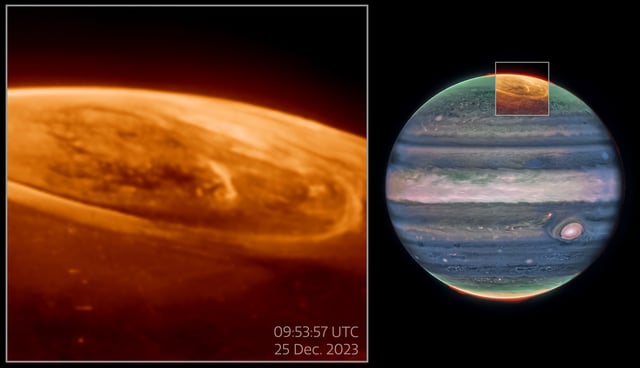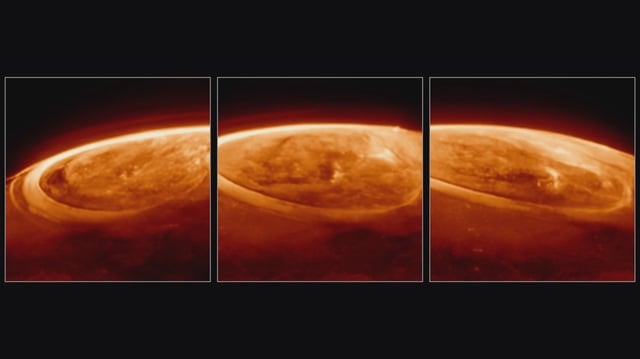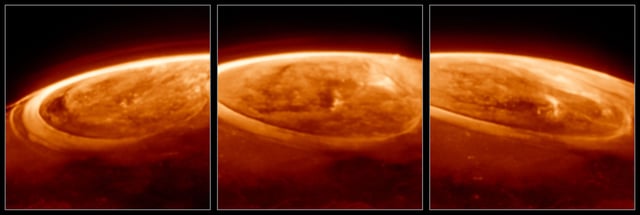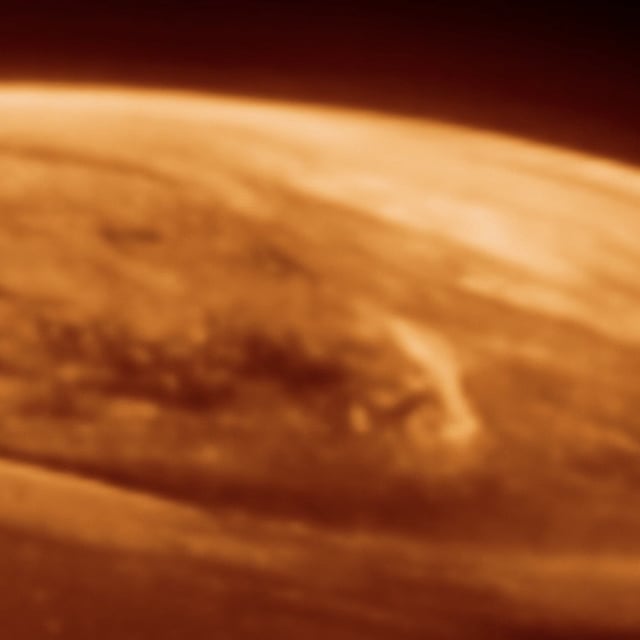Overview
- Jupiter’s auroras, captured by the James Webb Space Telescope, are hundreds of times brighter than Earth’s and change on sub-second timescales, contrary to prior expectations.
- Simultaneous observations with Webb and Hubble revealed a puzzling mismatch, with Webb’s brightest infrared auroral spots lacking ultraviolet counterparts in Hubble's data.
- The auroras are fueled by both solar wind and volcanic particles from Io, showcasing Jupiter’s unique magnetosphere dynamics.
- Emission from the H3+ ion, a key component of the auroras, was found to be far more variable than previously understood, raising questions about Jupiter’s atmospheric heating and cooling processes.
- Scientists plan follow-up Webb observations and comparisons with Juno data to explore these anomalies, with implications for ESA’s Juice mission arriving at Jupiter in 2031.



